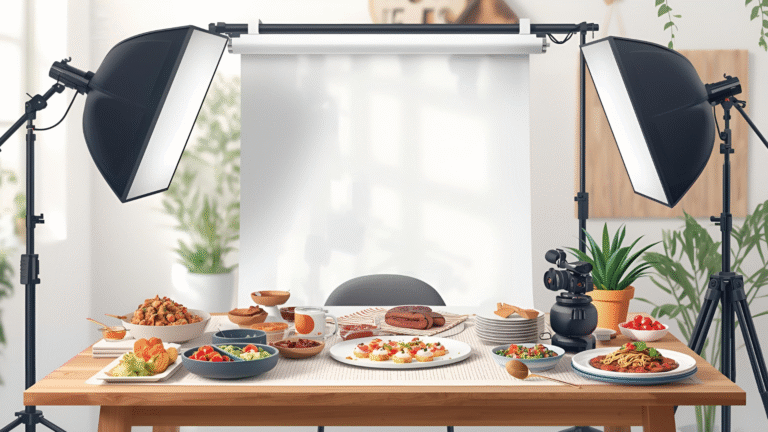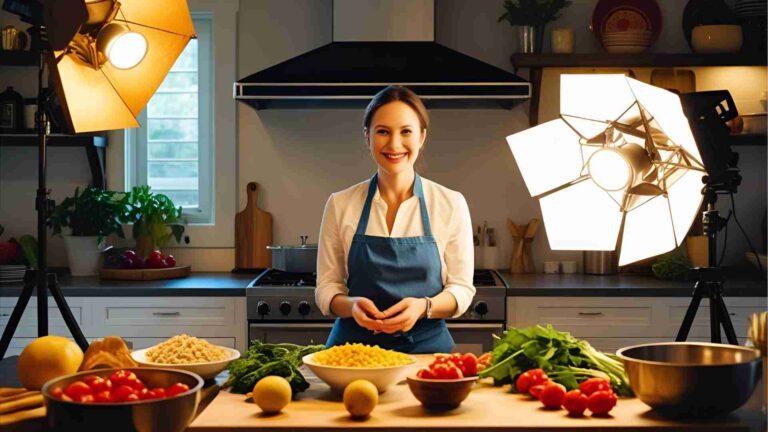Mastering Recipe Analytics for Food Blogs
Boost your UK food blog with expert recipe analytics, SEO strategies, and social media tips to grow your audience and enhance visibility.
Running a budget family food blog in the UK is a rewarding passion project, especially for someone with a background as a head chef and aspirations for a career in family food. With over 30 recipes and a desire to transition from Blogger to a standalone website, you’re ready to elevate your blog’s reach and appeal. This guide provides a detailed, actionable roadmap to enhance your blog’s visibility, engage a wider local audience, and leverage recipe analytics to fuel growth—all without the goal of monetization but with a focus on building a strong foundation for your culinary career.
1. Transitioning to a Standalone Website: Choosing the Right Platform
Moving from Blogger to a standalone website is a smart move to enhance your blog’s professionalism and user experience. A well-designed site can improve navigation, showcase your recipes, and boost SEO performance. Here’s how to make the transition:
Why Move to a Standalone Website?
A standalone website offers greater control over design, functionality, and SEO compared to Blogger’s limitations. Benefits include:
- Customizable Design: Create a visually appealing layout that reflects your brand.
- Enhanced SEO: Optimize URLs, meta tags, and schema markup for better search rankings.
- Improved User Experience: Offer mobile-friendly, fast-loading recipe pages.
- Analytics Integration: Use tools like Google Analytics and WP Recipe Maker to track performance.
Platform Options
Since you’ve used Squarespace before, it’s a viable option, but let’s compare it with other platforms to find the best fit for your budget family food blog:
| Platform | Pros | Cons | Pricing (Approximate, GBP) |
|---|---|---|---|
| Squarespace | User-friendly, stunning templates, built-in SEO tools, mobile-optimized | Limited plugin support, higher cost | £12–£30/month |
| WordPress.org | Highly customizable, extensive plugins (e.g., WP Recipe Maker), SEO-friendly | Requires hosting, steeper learning curve | £3–£10/month (hosting) + domain |
| Wix | Drag-and-drop builder, affordable, decent templates | Less flexible for advanced SEO, limited plugin ecosystem | £7–£20/month |
| Webflow | Advanced design control, responsive templates | Complex for beginners, higher cost | £10–£30/month |
Recommendation: WordPress.org is the best choice for food blogs due to its flexibility, robust plugin ecosystem (e.g., WP Recipe Maker, Yoast SEO), and SEO capabilities. It’s cost-effective for a passion project, with affordable hosting options like SiteGround or Bluehost (£3–£10/month). Pair it with a domain (£10–£15/year) for a professional touch.
Steps to Set Up Your Website
- Choose Hosting: Opt for SiteGround or Bluehost for reliable performance and support. (£3–£10/month)
- Register Domain: Purchase a .com or .co.uk domain (£10–£15/year).
- Install WordPress: Most hosts offer one-click WordPress installation. (Use one-click installation from your host.)
- Select Theme: Use a food-focused, mobile-responsive theme like Foodie Pro or Astra (free or ~£40 one-time).
-
Install Plugins:
- WP Recipe Maker: For SEO-friendly recipe cards with schema markup.
- WP Rocket: For site speed optimization (£40/year).
- ShortPixel: For image compression (£7–£20/month).
- Migrate Content: Export your Blogger posts and import them to WordPress using the Blogger Importer plugin.
- Set Up Analytics: Integrate Google Analytics and Search Console.
- Test Mobile Optimization: Use Google’s Mobile-Friendly Test.
2. Mastering SEO for Food Blogs
SEO is the backbone of increasing your blog’s visibility and attracting a wider UK audience. Here’s how to optimize your recipes for search engines:
Keyword Research
Effective keyword research helps you target what your audience searches for. Focus on long-tail keywords (specific phrases with lower competition) to rank higher.
-
Tools:
- Free: Google Keyword Planner, AnswerThePublic.
- Paid: SEMrush (£80–£200/month), Ahrefs (£80–£300/month).
-
Strategy:
- Enter broad terms like “budget family meals” into Google and note autocomplete suggestions (e.g., “budget family meals for 4”).
- Use AnswerThePublic to find questions like “how to make cheap family dinners.”
- Target UK-specific keywords (e.g., “budget bangers and mash recipe”).
-
Example Keywords:
- “easy budget family meals UK”
- “cheap kid-friendly dinners”
- “quick family recipes for busy parents”
| Keyword | Monthly Searches | Competition | Intent |
|---|---|---|---|
| budget family meals UK | 1,000–5,000 | Low | Informational/Recipe Search |
| cheap kid-friendly dinners | 500–2,000 | Medium | Recipe Search |
| quick family recipes | 2,000–10,000 | High | Recipe Search |
On-Page SEO
Optimize each recipe post to improve search rankings:
- Titles: Include primary keywords (e.g., “Easy Budget Bangers and Mash Recipe”).
- Headings: Use H2/H3 tags for “Ingredients,” “Instructions,” and “Tips.”
- URLs: Keep short and keyword-rich (e.g., yoursite.com/budget-bangers-mash).
- Meta Descriptions: Write compelling descriptions under 156 characters (e.g., “Try this budget bangers and mash recipe for a quick family dinner!”).
- Content: Integrate keywords naturally in introductions, instructions, and tips.
Recipe Schema Markup
Use WP Recipe Maker to add schema markup, which helps Google display your recipes as rich snippets (e.g., recipe cards with star ratings). Include:
- Ingredients
- Cooking time
- Servings
- Nutritional information (optional for budget blogs)
Chart: SEO Workflow

3. Leveraging Recipe Analytics with WP Recipe Maker
Recipe analytics provide insights into how your audience interacts with your content, helping you refine your strategy. WP Recipe Maker’s analytics features are perfect for tracking performance.
Setting Up Analytics
- Enable Local Tracking: Go to WP Recipe Maker → Settings → Analytics and enable tracking.
- View Data: Check raw data at WP Recipe Maker → Manage → Analytics.
- Reports: Use WP Recipe Maker → Reports for detailed insights on recipe performance (e.g., views, ratings).
Key Metrics to Track
- Recipe Views: Identify your most popular recipes.
- User Ratings: Monitor star ratings to gauge recipe success.
- Engagement: Track time spent on recipe pages via Google Analytics.
- Click-Through Rate (CTR): Use Google Search Console to see how often users click your recipes in search results.
Using Insights
- Popular Recipes: Create similar content (e.g., if “budget shepherd’s pie” performs well, add “budget cottage pie”).
- Low Performers: Update underperforming recipes with better images or clearer instructions.
- User Feedback: Encourage ratings to boost credibility and SEO.
| Metric | Tool | Action |
|---|---|---|
| Recipe Views | WP Recipe Maker Reports | Create similar recipes |
| User Ratings | WP Recipe Maker Analytics | Promote high-rated recipes |
| Time on Page | Google Analytics | Improve content for low-engagement pages |
| CTR | Google Search Console | Optimize meta descriptions |
4. Boosting Social Media Presence
Your Instagram (30–70 views, 44 followers) and Facebook (family and friends) need a strategic push to reach a wider local audience. Here’s how to grow your social media presence:
Instagram Strategies
-
Optimize Your Profile:
- Use a clear bio: “UK Budget Family Recipes | Quick, Affordable Meals | Ex-Head Chef.”
- Add a link to your blog.
-
Content Ideas:
- Share high-quality recipe photos with consistent branding.
- Post Reels of quick recipe steps (e.g., “5-Minute Budget Pasta”).
- Use Stories for behind-the-scenes content (e.g., cooking with kids).
- Hashtags: Use 5–10 relevant, low-competition hashtags (e.g., #UKFoodBlog, #BudgetRecipes, #FamilyMealsUK). Avoid overused ones like #Food.
- Engagement: Comment on local UK food accounts and join foodie communities.
Facebook Strategies
- Create a Page: If not already done, convert your personal page to a professional page.
-
Content Types:
- Share recipe links with engaging captions.
- Host live cooking sessions for budget meals.
- Join UK-based food groups (e.g., “UK Family Cooking”).
- Community Building: Post polls (e.g., “What’s your go-to budget dinner?”) to engage followers.
Pinterest for Food Blogs
Pinterest is a powerhouse for food bloggers, driving significant traffic. Here’s how to leverage it:
- Set Up a Business Account: Access analytics and Rich Pins.
-
Optimize Pins:
- Use vertical images (2:3 ratio, 1000x1500px).
- Add text overlays with keywords (e.g., “Budget Family Shepherd’s Pie”).
- Enable Rich Pins via WP Recipe Maker for recipe metadata.
-
Board Strategy:
- Create themed boards (e.g., “Budget Family Dinners,” “Kid-Friendly Snacks”).
- Join group boards like “UK Food Bloggers” via PinGroupie.
- Posting Schedule: Pin 2–3 times daily, focusing on seasonal content (e.g., winter stews).
Chart: Social Media Workflow

5. Enhancing User Experience with Recipe Cards
A great user experience keeps readers on your site and boosts SEO. WP Recipe Maker’s recipe cards are mobile-friendly and interactive, enhancing engagement.
Key Features
- Responsive Design: Adjusts to phones, tablets, and desktops.
- Interactive Elements: Ingredient scaling, clickable images, and printable versions.
- SEO Benefits: Automatic schema markup for rich snippets.
Tips for Optimization
- Clear Instructions: Use numbered lists and action verbs (e.g., “Chop,” “Simmer”).
- Complete Metadata: Include prep time, cook time, servings, and equipment.
- User Ratings: Encourage readers to leave star ratings for social proof.
6. Building Authority and Local Reach
As a former head chef returning to university, your expertise can establish your blog as a trusted resource. Here’s how to build authority and reach a wider UK audience:
High-Quality Content
- Tested Recipes: Ensure recipes are accurate and budget-friendly.
- Unique Voice: Infuse posts with your chef experience and family focus.
- Local Appeal: Highlight UK ingredients (e.g., “Using affordable Tesco sausages”).
Backlinks and Collaborations
- Guest Posting: Write for UK food blogs or local parenting sites, linking back to your blog.
- Local Partnerships: Collaborate with UK micro-influencers (e.g., local foodies with 1,000–10,000 followers).
- Community Engagement: Join UK food festivals or online groups to promote your blog.
7. Content Strategy for Growth
A strategic content plan keeps your blog fresh and relevant. Here’s how to structure it:
Recipe Clusters
Group related recipes to boost SEO:
- Theme: “Budget UK Family Dinners.”
- Recipes: Link shepherd’s pie, bangers and mash, and lentil stew recipes.
- Hub Page: Create a page listing all recipes in the cluster.
Chart: Recipe Cluster Structure

Seasonal Content
Plan content around UK holidays and seasons:
- Winter: Budget stews and casseroles.
- Easter: Affordable spring recipes.
- Christmas: Budget-friendly festive meals.
| Month | Focus | Content Ideas |
|---|---|---|
| January | Healthy Budget Meals | Meal prep, low-cost salads |
| April | Easter | Spring lamb, budget hot cross buns |
| December | Christmas | Affordable mince pies, roast recipes |
8. Measuring and Improving Performance
Track your blog’s performance to identify what works and what needs tweaking:
- Google Analytics: Monitor page views, bounce rate, and time on page.
- Google Search Console: Track keyword rankings and CTR.
- WP Recipe Maker Analytics: Analyze recipe views and ratings.
Continuous Improvement
- Update Old Posts: Refresh low-performing recipes with new images or instructions.
- Test Keywords: Experiment with new long-tail keywords.
- Engage Readers: Respond to comments and ratings to build community.
Conclusion
Mastering recipe analytics and SEO for your UK family food blog is a recipe for success. By transitioning to a WordPress.org site, optimizing recipes with WP Recipe Maker, leveraging social media (especially Pinterest), and tracking performance, you can grow your audience and establish your blog as a go-to resource. Your passion as a former head chef, combined with these strategies, sets the stage for a thriving blog that inspires UK families to cook affordable, delicious meals. Keep experimenting, stay consistent, and watch your blog flourish!
Sample Content Calendar for UK Food Blog
January
- Theme: Healthy Budget Meals
-
Posts:
- Budget Veggie Soup Recipe
- Meal Prep for Families
- Social Media: Share Reels of quick prep tips.
April
- Theme: Easter
-
Posts:
- Budget Hot Cross Buns
- Affordable Spring Lamb Stew
- Social Media: Pin Easter recipes on Pinterest.
December
- Theme: Christmas
-
Posts:
- Budget Mince Pies
- Affordable Roast Dinner
- Social Media: Host a Facebook Live cooking session.
Please share these Mastering Recipe Analytics for Food Blogs with your friends and do a comment below about your feedback.
We will meet you on next article.
Until you can read, 7 Strategies To enhance Customer Lifetime Value For D2C Brands






